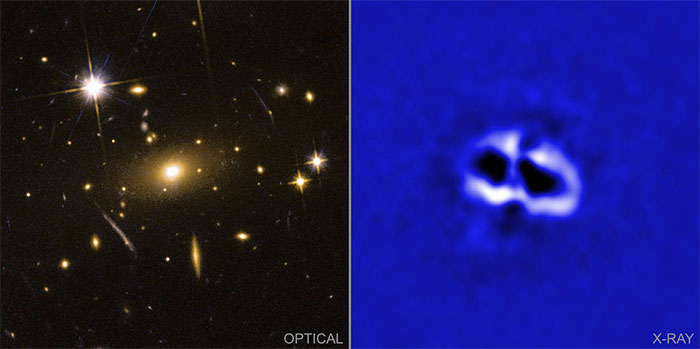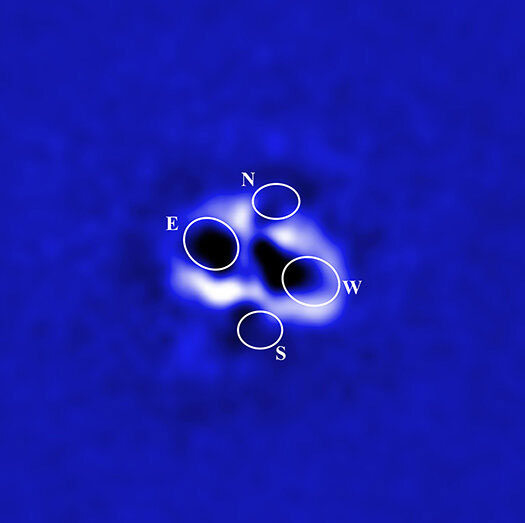Scientists have discovered four massive voids at the center of a galaxy cluster thanks to NASA’s Chandra X-ray Observatory, related to a pair of supermassive black holes.
Astronomer Francesco Ubertosi from the University of Bologna (Italy), the lead author of the study, stated that these are two pairs of gigantic voids with very different shapes and orientations.
According to Phys.org, galaxy clusters are the largest structures in the universe, bound together by gravity, consisting of hundreds or even thousands of individual galaxies, along with vast amounts of hot gas and dark matter that cannot be seen by conventional means.

Image showing mysterious cosmic voids – (Photo: Chandra/NASA)
The hot gas spreads differently than in clusters with much greater mass than the galaxies themselves, glowing brilliantly when observed in X-rays as Chandra has done.
The galaxy cluster studied in this research is named RBS 797, located 3.9 billion light-years away from Earth.

4 voids in 4 different directions – (Photo: Chandra/NASA)
Similar cosmic voids have been discovered in other galaxy clusters, and scientists have long hypothesized that they are the result of powerful black hole eruptions. When supermassive black holes consume a large amount of matter, they release a tremendous jet stream, which can penetrate the hot gas.
The analysis of RBS 797 data indeed identified two supermassive black holes, launching jets in two nearly perpendicular directions. This discovery provides clear evidence for the aforementioned hypothesis.


















































